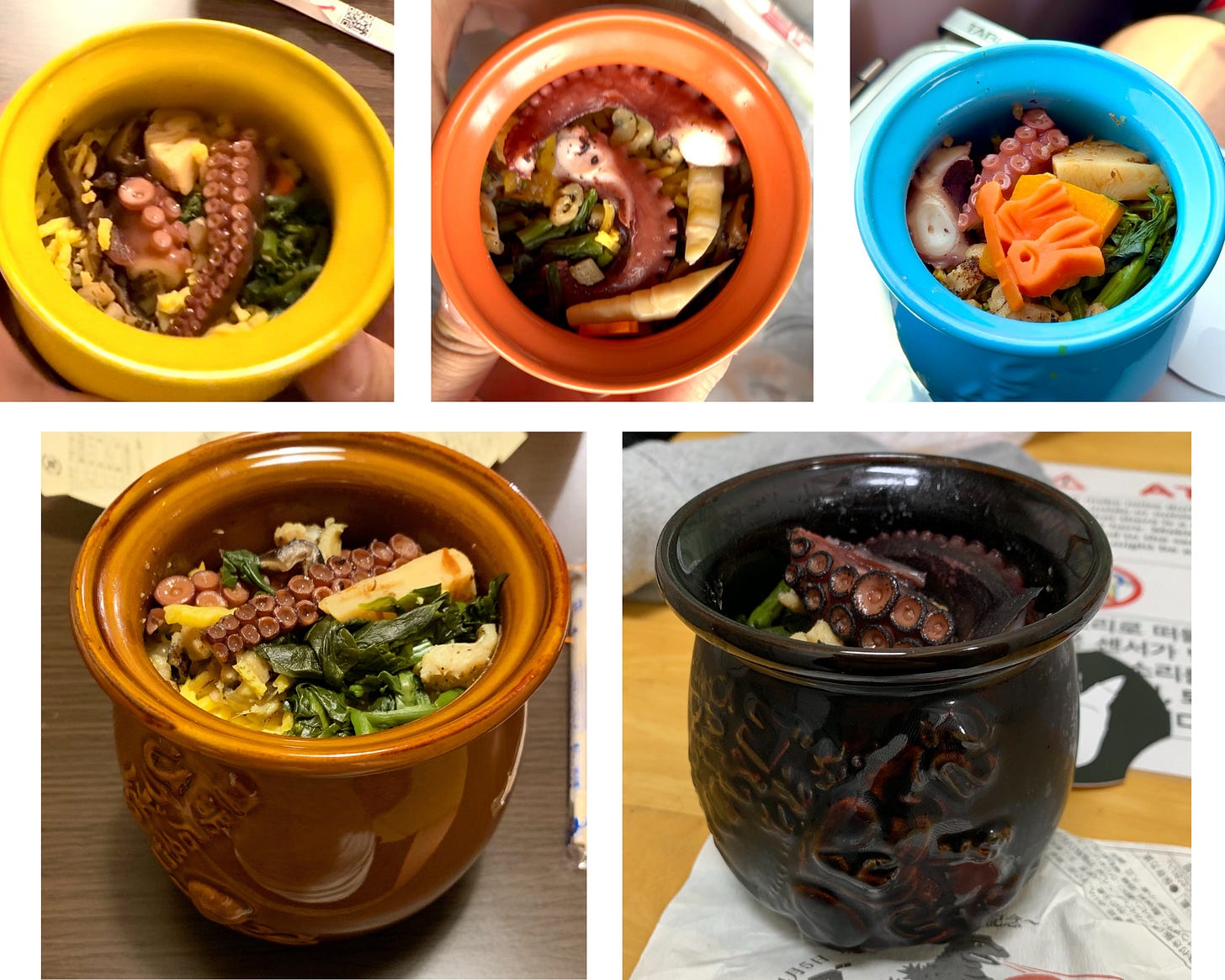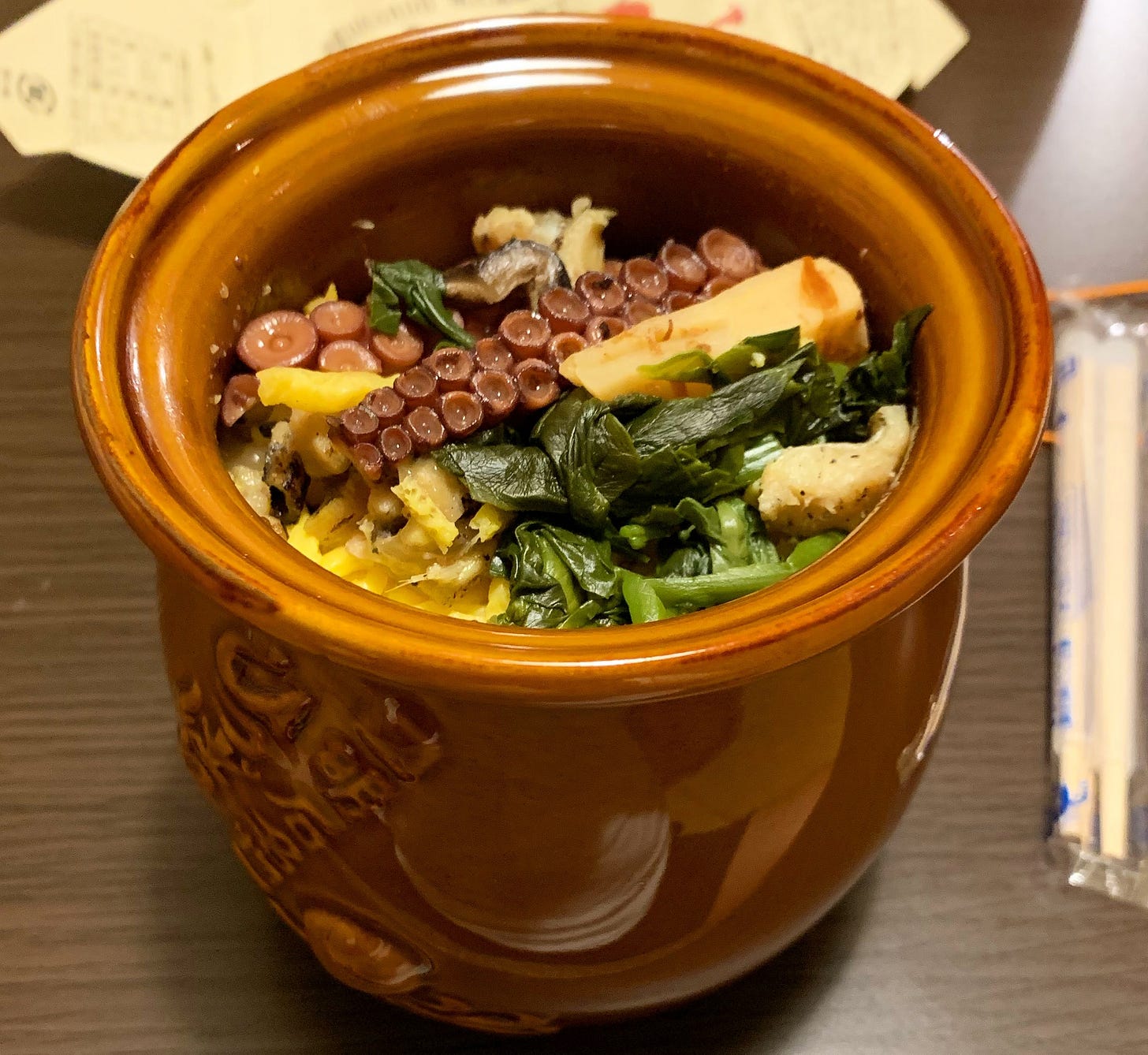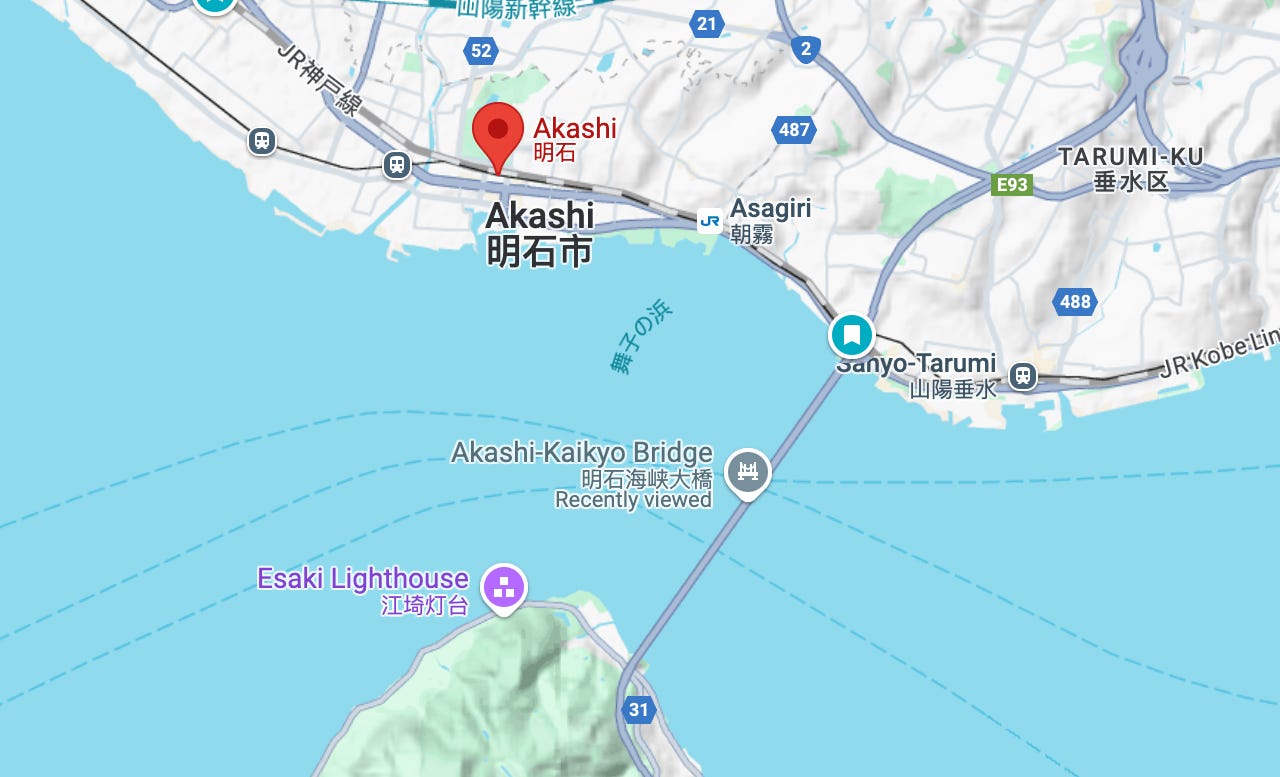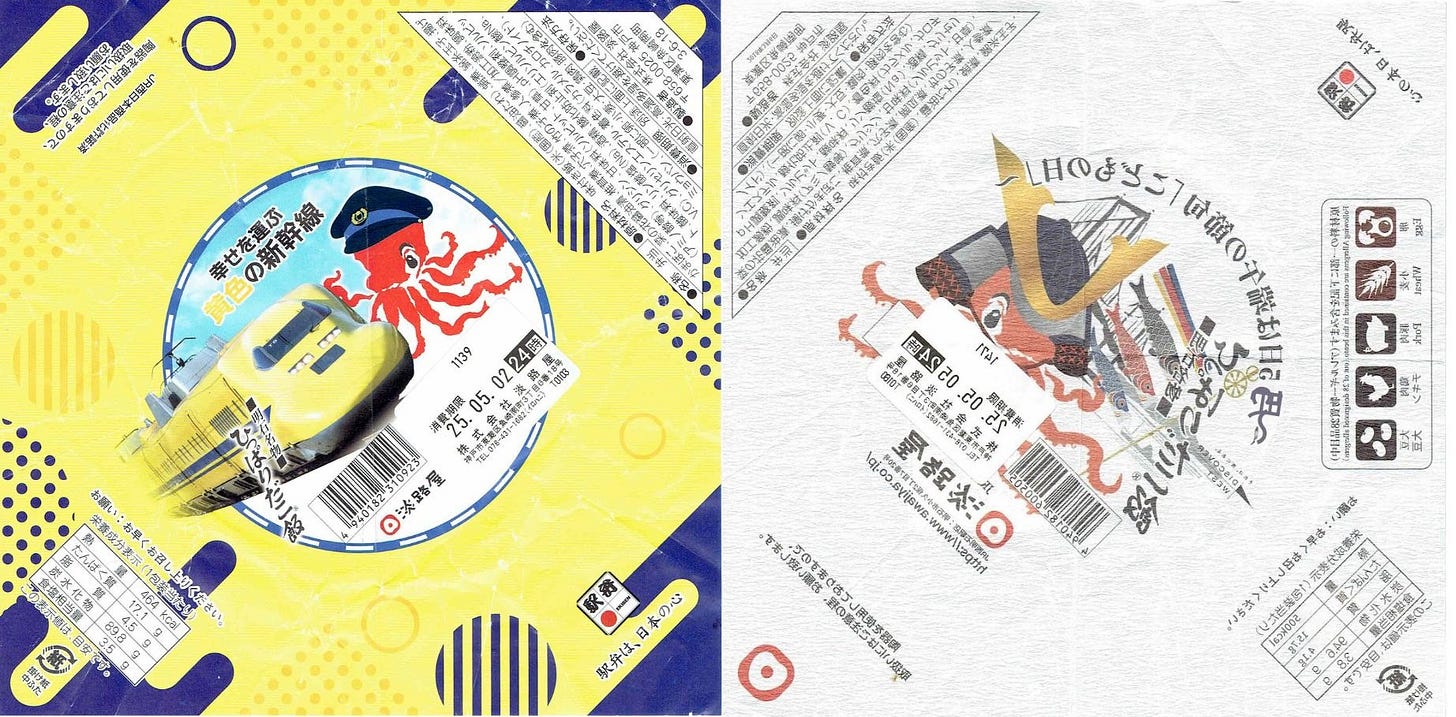The surprisingly deep lore of Hippari Takomeshi, an octopus rice ekiben from Hyogo Prefecture
A train bento with dozens of seasonal/limited edition ceramics, a bridge with a tragic history and how octopus got more expensive than wagyu beef

The Hippari Takomeshi ekiben is a palm-sized glazed pot filled with stewed octopus tentacles, rice, pickles, shittake mushroom, and other flavors native to Hyogo Prefecture. The contents hide an Akashiyaki, an octopus dumpling that similar to takoyaki but older, served with broth instead of mayo and Worcester sauce.
The ingredients are layered and cooked inside the ceramic, which is modeled after the traps once used by fishermen in the churning waters of the Akashi Strait. The trap’s mechanism is behavioral: octopi take refuge inside the pots after fishermen lower them to the ocean floor.
The ekiben’s name is a portmanteau and a double entendre. The phrase “hipparidako” translates to “pulled octopus.” It’s an idiom describing a person so popular, they’re constantly pulled in all directions by the invitations they’re recieving.
The idiom references the imagery of sun-drying caught octopus with tentacles outstretched. Tako-meshi is a rustic Hyogo fisherman’s meal of chopped octopus cooked with rice. Merged, the phrases translate to “highly sought after octopus meal.”
Japan Railways released Hippari Takomeshi in 1998 to mark the completion of the Akashi Kaikyo Bridge, which connects Kobe and Awaji island.
Akashi, where the ekiben was launched, is famous for octopus. Fishermen and chefs prize the firm texture and pinkish tinge of the local specimens, muscular from clinging to the ocean floor against the strait’s violent currents.
These waters were once deadly to travelers. Storms here sank the Sekirei Maru, a passenger ferry in 1945, killing more than 300 passengers. Two Japan National Railways ferries collided amid a thick fog in 1955, killing 168 people, most of them local elementary and junior high school students.
The accidents prompted the government to commission the Akashi-Kaikyo bridge, actually a set of bridges connecting Kobe, Awaji Island and Shikoku. The completed length spans nearly 4 kilometers and took 4 decades, 5 billion dollars, and the work of more than 2 million people. It was the world’s longest suspension bridge until it was dethroned in 2022 by the 1915 Çanakkale Bridge in Northwestern Turkey.
Hippari Takomeshi lives up to its name - it’s probably the most famous and best-selling ekiben. The ceramic comes in more than three dozen varieties, and new collaborations are always dropping. I own a black and maroon Godzilla edition, a light blue one released for Children’s Day and another themed to Dr. Yellow, a brightly-colored maintenance shinkansen popular with children.
The ekiben once featured actual Akashi octopus, but a while back, Awajiya, the bento’s manufacturer, announced that they would now use octopi caught elsewhere in the Seto Inland Sea.
The 2021 Akashi octopus catch was the lowest in recorded history, forcing the local city government to implement emergency conservation efforts. They relocated tons of egg-bearing female octopi and seeded the ocean floor with the hundreds of the same pots once used by local fishermen. Akashi ceramics, once iconic as traps, are now used primarily to support octopi population growth.
Officials blame overfishing and ecosystem imbalances, noting in a report that the local seaweed has lost color. It’s not clear if the population has recovered.
According to a United Nations bulletin, global octopus prices are notching historic highs amid exploding demand and a market destabilized by American tariffs. Japan is now one of the world’s biggest importers of octopi. And in 2024, octopus prices exceeded those of wagyu beef. A similar rush is happening in matcha tea powder and seaweed. Exploding global demand for Japanese culture has destabilized markets for traditional ingredients, as well the ecosystems that sustain them.
On recent trips to ekiben shops, I noticed that Hipparitako-meshi’s porcelain pot had been replaced with a molded paper container after feedback from environmentally-minded customers.
Each ekiben has a story to tell, and Hippari Takomeshi’s is more of a parable. It’s hard to ignore that the cultural practices referenced by its design are obsolete.
It’s fitting that the “popular octopus meal” ekiben contains a lesson about the price of popularity. That’s the difference between food history and fable - a full accounting of what it cost to make, and who paid.





